This was published 2 years ago
They walked for 75 days to ask for a better life. Now they must wait four more years for an answer
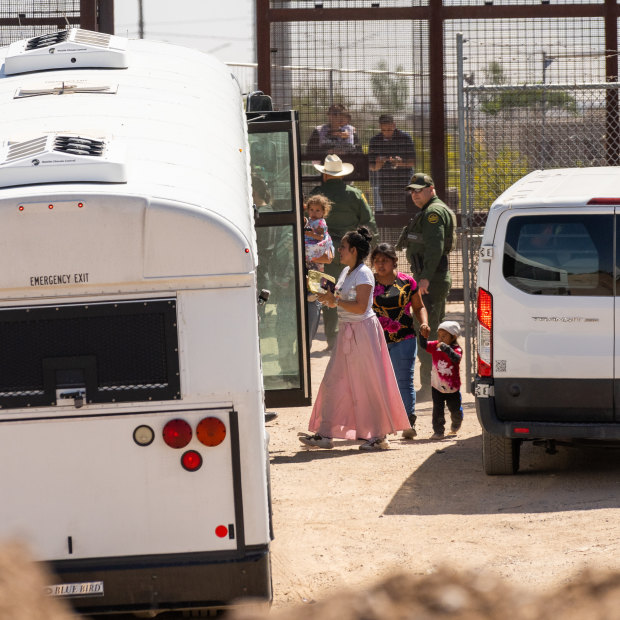
On the day Title 42 is set to expire, migrants are directed onto US government buses after crossing through a section of the border wall in El Paso, Texas.Credit: Lisa V. López-Lupo
Texas: Beneath the unrelenting sun in El Paso, a four-year-old girl sits outside a church where countless migrants who have crossed the US southern border hoping for a better life are camped under white tarps or on flattened boxes lined with donated blankets.
Ahead of a dramatic shift in immigration policy this week, the child and her parents, Luis Valbuena and Maria Claudia, embarked on a 2½-month journey, largely on foot, from their home in Colombia: across the jungles of Panama, along the fast-flowing rivers of Nicaragua, and past the drug cartels of Mexico.
Now, after being arrested and processed by Texas authorities and released back into the community to await an immigration hearing - a controversial practice that limits the number of families placed in detention centres - they are unsure of what happens next.
“We want to go to Denver because we have relatives there,” says 22-year-old Valbuena, as he shows me Homeland Security Department documents confirming he has been granted a court hearing to formally seek US asylum.

Migrants wait in line to be processed at the US-Mexico border before the lifting of Title 42Credit: Bloomberg
The problem is, due to an extraordinary backlog of migrants from South and Central America, the court date isn’t until March 13, 2027. What will they do for the next four years?
“I don’t know,” he says, holding his daughter tightly as his partner sits beside him. “We don’t have much, so I’d like to find a job somewhere ...”
A border mess
Australia’s immigration regime - which mandates detention for illegal arrivals - is regarded as one of the strictest in the world. America’s system, which last year resulted in a record 2.3 million people apprehended along the 3000-kilometre southern border separating the United States and Mexico, is known as a mess.
Many are now bracing for things to get worse, following the expiration of a Trump-era policy that allowed the government to immediately expel people, with some exceptions, to stop the spread of COVID-19.
“We’re very concerned about what might happen,” says John Martin, the deputy director of El Paso’s Opportunity Centre for the Homeless, who had about 800 migrants sleeping in the laneway outside his shelter last Sunday because inside was already at capacity.
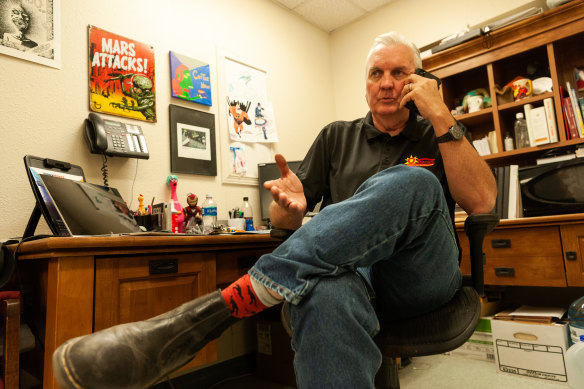
John Martin, Deputy Director at Opportunity Center for the Homeless in El Paso.Credit: Lisa V. López-Lupo
“We know we’re going to see a large number of individuals, but to what extent we’re just not sure. We’ve just been trying to adapt daily, and in some cases hourly.”
Even before Title 42 ended at 11.59 pm on Thursday (Friday afternoon AEST), the signs of strain were everywhere.
In downtown El Paso, where 2500 migrants were camped outside Sacred Heart Church last weekend, an informal economy had sprung up. One person was charging $1 per phone charge at her home; others were spruiking Coca-Cola for the same price; another was selling flattened cardboard boxes to sleep on.
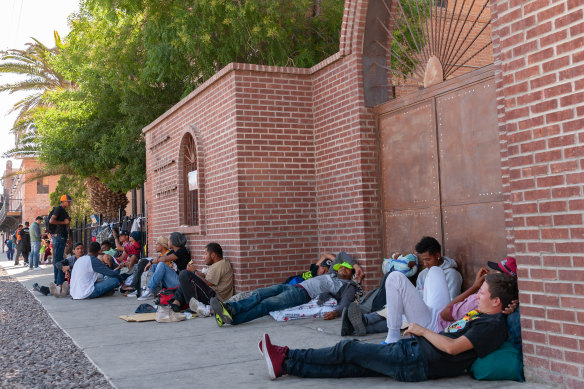
Migrants seek refuge outside Sacred Heart Church in El Paso, Texas, on the day Title 42 expired. Credit: Lisa V. López-Lupo
In Washington, DC, two busloads of migrants arrived at the home of Vice President Kamala Harris on Thursday morning sent by Texas Governor Greg Abbott, who started the contentious bussing policy last year to goad President Joe Biden for his “broken” immigration system. Since then, other Republican governors have followed suit, orchestrating surprise drop-offs in places such as New York, Chicago and Martha’s Vineyard.
And in Manhattan - a “sanctuary city” where every person in need of housing has a unique legal right to shelter - a fresh stoush erupted last week after Mayor Eric Adams announced a plan to house about 300 men in hotels in Rockland and Orange counties to meet the demand.
About 36,000-plus migrants are currently in the state’s care, many staying in taxpayer-funded Manhattan hotels, causing simmering resentment from parts of the community. Adams’ announcement exacerbated the tension.
“Here is my response,” Rockland County’s Republican executive Ed Day told his local WABC-770 AM radio program. “Mr Adams, you can try to run us over, (and) I will reach up and grab you by the throat for the people of Rockland County.”
‘Credible fear’
In many ways, New York is emblematic of the fear and confusion surrounding the end of Title 42 - and the start of another regime known as Title 8.
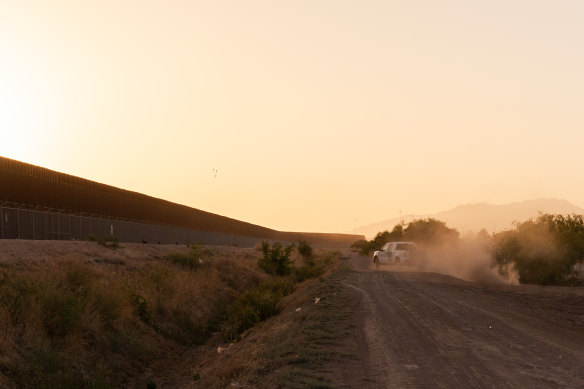
One day before Title 42 is set to be lifted, Border Patrol units patrol along the US side of the wall in El Paso, Texas. Credit: Lisa V. López-Lupo
Under the new rules, people won’t be able to seek asylum in the US unless they have first applied for, and been denied, legal protection in another country.
If they haven’t, they can make their case through a “credible fear” interview, explaining why they left their home or face persecution and setback. But if customs officials don’t think the reason is valid enough (or if a migrant doesn’t request asylum), they will be deported to their country of origin or Mexico.
What’s more, unlike Title 42, those sent back under the new system could be banned from re-entering the US for a minimum of five years and risk criminal prosecution for repeated attempts.
It’s the kind of policy that has left Biden under attack from all sides. On the one hand, Republicans accuse him of creating the “chaos” by being too soft on border security. On the other, some Democrats and progressives say he has not done enough to create a better and more efficient pathway to help people seek asylum.
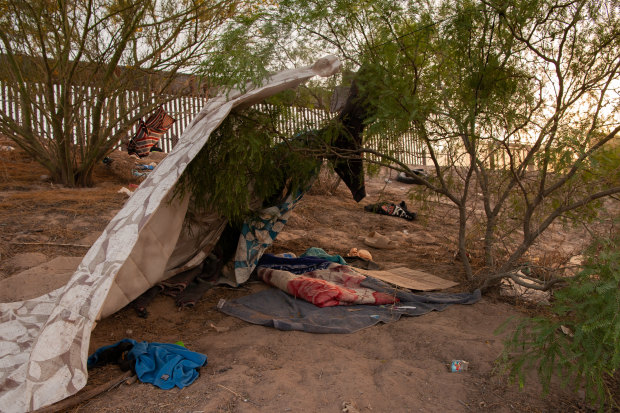
One day before Title 42 is set to be lifted, makeshift shelter and items are left behind by migrants along the US side of the wall in El Paso, Texas. Credit: Lisa V. López-Lupo
“Biden talks about restoring the soul of our nation. Let’s remember we are a nation of immigrants,” tweeted congressman Chuy Garcia, a member of the Democrats’ progressive caucus.
Since taking office in January 2021, there have been 6 million illegal immigrants detained or intercepted under Biden - more than any other president in history.
However, America’s border crisis spans across successive governments and is influenced by shifting migration patterns: previously, those seeking entry were mainly solo Mexican men wanting a job; now there are more families and people from crisis-torn countries such as Venezuela and Cuba.
The system is also unlikely to be fixed without bipartisan political will, says Muzaffar Chishti, a senior fellow at the Migration Policy Institute.
He says the new policy is a “huge” change because it would mean that, for the first time in US history, anyone who arrives between legal ports of entry would be “presumptively ineligible for asylum”.
However, when asked what impact the end of Title 42 may have, he replied: “The honest truth is there are so many unknowns and we don’t know how they will pan out.”
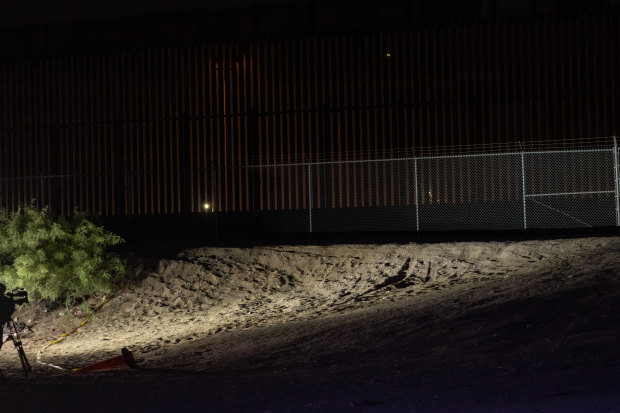
A portion of the border wall in Texas remains calm shortly after Title 42 expired.Credit: Lisa V. López-Lupo
“The rubber will hit the road if the government doesn’t have the capacity to process people,” he said.
“Let’s say 10,000 people a day come across the border under Title 8 but the administration has only capacity for processing 1000 - what will happen to the other 9000?”
Just the beginning
Back in Texas, the state and federal authorities are cognisant of the challenge.
As the days counted down to the lifting of Title 42 this week, Biden sent 1500 troops to the border to supplement state-based national guards, and patrol agents handed out flyers on Monday directing people to turn themselves in for processing.
Additional shelters were also set up at old schools to help migrants get to their next destination, not to mention minimise the number of people sleeping on the streets - something White House aides knew would give weight to claims that the border was “wide open”.
The preparation seemed to work. Unlawful crossings topped 10,000 per day earlier in the week, the highest levels ever, and throughout Thursday, people were steadily apprehended at the border and loaded onto government buses. But the time the pandemic policy ended on Thursday night, downtown El Paso was relatively quiet and the wild rush of people crossing the Rio Grande never came. The next day, facilities were full, but border crossings remained lower than predicted.
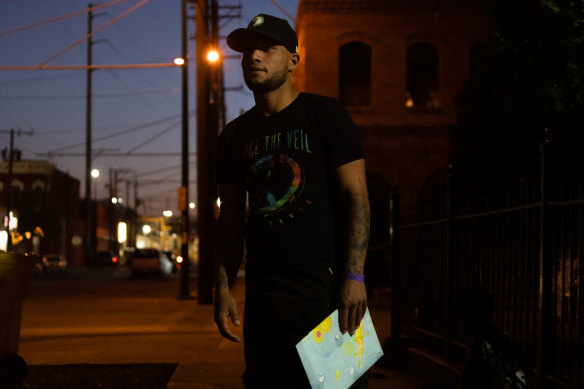
After an eight-month journey from Venezuela, Eduardo Rubio, 28, poses for a photo outside Sacred Heart Church in El Paso, Texas. Credit: Lisa V. López-Lupo
Still, thousands of migrants are expected to be released in coming days - and many more are sitting on the Mexico side waiting for their chance to enter.
“We know this is just the beginning,” El Paso Mayor Oscar Leeser said on Friday.
It’s also the beginning for those who made the perilous journey into America, some duped out of their savings by people smugglers; others risking their life in search of a better one.
Among them is Eduardo Rubio, 28, who left the dictatorship of Venezuela eight months ago and made the trip through countries including Nicaragua, Guatemala and Mexico before crossing into El Paso eight days ago.
“I came because I want a better life for my family,” he tells me.
Another Venezuelan man, who did not wish to be identified, had a similar story, but seemed more scared and uncertain about his future.
Sitting outside Sacred Heart Church with a ziplock bag filled with toiletries and a custom-made phone authorities had given him to track his movements, he shows me a Homeland Security appointment he must attend in New York on June 16. If he doesn’t make it, he will face deportation.
“But I don’t have any money,” he says. “How am I meant to get there?”
Get a note directly from our foreign correspondents on what’s making headlines around the world. Sign up for the weekly What in the World newsletter here.